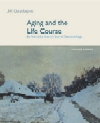1. Census data provide a great deal of information about people's living arrangements.
BC Stats is the central statistical agency for the Canadian province of British
Columbia (http://www.bcstats.gov.bc.ca/).
Go to the agency's website and link to Census, then 1991 Census. Select "Living
Arrangements of Seniors" and "Senior Care" and answer the following
questions: - What percentage of seniors in British Columbia lived with their families
in 1991?
- How many women aged 75 and older lived alone?
- In 1991, what percentage of females aged 75 and over were living with relatives?
How did that percentage compare to the same figure in the 1980 census?
- In 1991, how many of every thousand older British Columbians were institutionalized?
In 1980?
- How does the agency explain the decline in the institutionalization of seniors
from 1980 to 1991?
2. The Administration on Aging (http://www.aoa.dhhs.gov/)
is a site designed for older Americans and their families, as well as anyone
who is interested in the elderly. Go to the organization's website and link
to Statistics About Older People, then to Statistical Information on Older Persons.
Select "A Profile of Older Americans: 1999" and read about living
arrangements. After looking at the pie charts, answer the following questions: - Where did the majority of noninstitutionalized older persons live in 1998?
- How many noninstitutionalized older persons lived alone in 1998?
- What percentage of men aged 65 and older lived with a spouse in 1998?
- What percentage of older women lived with relatives in 1998?
3. The Regional Task Force on the Homeless in San Diego, California (http://www.co.san-diego.ca.us/rtfh)
addresses the issue of homelessness on a regional basis through statistical
research, advocacy, and technical assistance. The task force also initiates
plans and policies to alleviate homelessness. To read about the elderly homeless
in San Diego County, go to the homepage and click on "Enter." Scroll
down the page and click on "Elderly." Read through the sections Introduction,
Prevalence, Reasons for Small Proportion of Elderly Homeless Persons, and and
Top Unmet Needs; then answer the following questions: - Who are the majority of aged persons on the street?
- Approximately how many homeless persons aged 65 or older live in
the San Diego area?
- What is the profile of the "regular client" at the Senior
Community Center?
- What are some possible reasons for the relatively low number of elderly
who are homeless?
- What are some of the top unmet needs of the elderly homeless?
4. The Senior Resource (http://www.seniorresource.com/shared.htm)
provides information to the public about housing options for seniors, as well
as guidance regarding retirement, finance, and insurance. Go to the site, scroll
down the page, and read about shared housing. Then answer the following questions: - What is shared housing?
- Who can apply for shared housing?
- What are some of the reasons a person should apply for shared housing?
|



 2002 McGraw-Hill Higher Education
2002 McGraw-Hill Higher Education